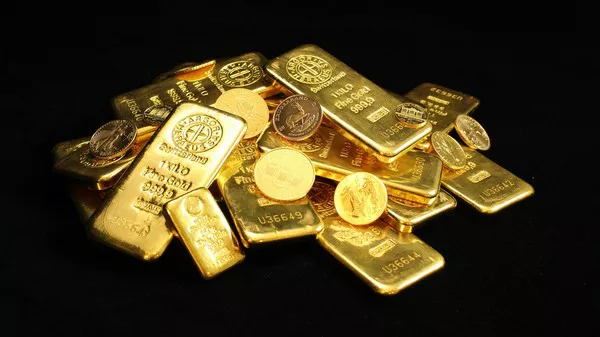Gold has long been a symbol of wealth and a cornerstone of financial stability. Its value is influenced by a myriad of factors including geopolitical events, economic policies, and market speculation. The year 1980 is particularly notable in the history of gold prices due to the unprecedented peak it reached. This article delves into the dynamics that led to this historic valuation, its broader economic implications, and the legacy it has left on modern financial markets.
The Economic Context of the 1970s
To understand the value of gold in 1980, it is essential to examine the economic backdrop of the 1970s. This decade was marked by significant financial turbulence, characterized by high inflation, energy crises, and shifts in monetary policy.
Inflation and Stagflation: The 1970s saw persistent inflation, exacerbated by the oil embargoes of 1973 and 1979, which led to skyrocketing energy prices. The phenomenon of stagflation—simultaneous high inflation and stagnant economic growth—eroded the purchasing power of currencies, making gold an attractive hedge.
Collapse of Bretton Woods System: In 1971, President Richard Nixon ended the convertibility of the US dollar to gold, effectively dismantling the Bretton Woods system. This shift to fiat currencies increased uncertainty and drove investors towards gold as a stable store of value.
Geopolitical Uncertainty: The Cold War, coupled with regional conflicts like the Iranian Revolution of 1979, created a climate of geopolitical instability. Such periods often boost gold prices as investors seek safe-haven assets.
The Peak of Gold Prices in 1980
In January 1980, gold prices reached an all-time high of $850 per ounce, a record that would stand for nearly three decades. This surge was driven by a combination of the aforementioned economic factors, compounded by speculative fervor and market psychology.
Speculative Mania: The late 1970s saw an influx of speculative investments in gold, driven by the belief that the precious metal would continue to rise in value amidst ongoing economic turmoil. This speculation created a feedback loop, pushing prices higher as more investors rushed in.
Inflation Hedge: As inflation rates soared, gold was increasingly seen as a hedge against the diminishing value of paper currencies. The tangible nature of gold provided a sense of security that fiat money, subject to devaluation, could not.
Market Psychology: The fear of economic collapse and the distrust in governmental monetary policies fueled a collective psychology that favored gold. This was evident in the surge of gold purchases by both institutional investors and the general public.
Governmental and Institutional Responses
The dramatic rise in gold prices did not go unnoticed by governments and financial institutions. Their responses played a crucial role in both the spike and subsequent stabilization of gold prices.
Federal Reserve Policy: Under Chairman Paul Volcker, the Federal Reserve implemented aggressive interest rate hikes to combat inflation. These measures, while initially contributing to economic strain, eventually succeeded in stabilizing the US dollar and curbing inflation, which in turn tempered the demand for gold.
International Monetary Fund (IMF) Sales: During this period, the IMF conducted gold auctions to moderate the market. These sales were part of a broader strategy to discourage gold hoarding and stabilize prices.
Government Regulations: Various governments imposed regulations to manage the impact of soaring gold prices. For instance, the US government, which had lifted restrictions on private gold ownership only in 1975, monitored gold trading activities closely during this volatile period.
Long-term Implications and Legacy
The peak of gold prices in 1980 had lasting implications on both financial markets and monetary policy. Understanding these effects provides valuable insights into the interplay between precious metals and economic stability.
Monetary Policy Lessons: The events of 1980 underscored the importance of prudent monetary policy. Central banks learned the necessity of maintaining inflation control to prevent economic conditions that could drive speculative bubbles in commodities like gold.
Investor Behavior: The dramatic rise and fall of gold prices influenced investor behavior and the development of diversified investment strategies. The experience highlighted the risks associated with speculation and the importance of balancing portfolios across various asset classes.
Gold as a Safe Haven: Despite the volatility of 1980, gold reaffirmed its status as a safe haven asset. Its performance during periods of economic instability reinforced its role in financial markets, leading to sustained interest in gold investments.
Market Regulation: The fluctuations in gold prices prompted discussions about market regulation and the role of governmental intervention in commodity markets. The lessons from 1980 have influenced regulatory frameworks to better manage market volatility.
Modern Reflections on Gold’s 1980 Valuation
In contemporary times, the value of gold continues to be a barometer for economic sentiment. The peak in 1980 serves as a historical benchmark, reminding investors and policymakers of the intricate balance between economic factors and market dynamics.
Comparative Analysis: Modern analysts often compare current gold prices to the inflation-adjusted value of gold in 1980. This provides a perspective on whether gold is overvalued or undervalued in the context of present-day economic conditions.
Technological Advances: The advent of digital trading platforms and financial instruments such as gold ETFs (Exchange-Traded Funds) has transformed the gold market since 1980. These innovations have increased accessibility and liquidity, impacting how gold is traded and valued.
Global Economic Factors: While the economic conditions of the 1970s and 1980s were unique, the fundamental factors driving gold prices—such as inflation, geopolitical risk, and currency stability—remain relevant. Understanding the 1980 peak helps contextualize contemporary movements in gold prices.
See Also Spot Trading vs Futures Trading: Which is Safer
Conclusion
The value of gold in 1980 represents a pivotal moment in financial history. Driven by economic uncertainty, speculative fervor, and a collective flight to safety, gold prices reached unprecedented heights. The events surrounding this peak have provided invaluable lessons for investors and policymakers alike, shaping the modern landscape of financial markets. As we navigate current economic challenges, the legacy of 1980 serves as a reminder of gold’s enduring role as a measure of economic sentiment and a safeguard against financial instability.


